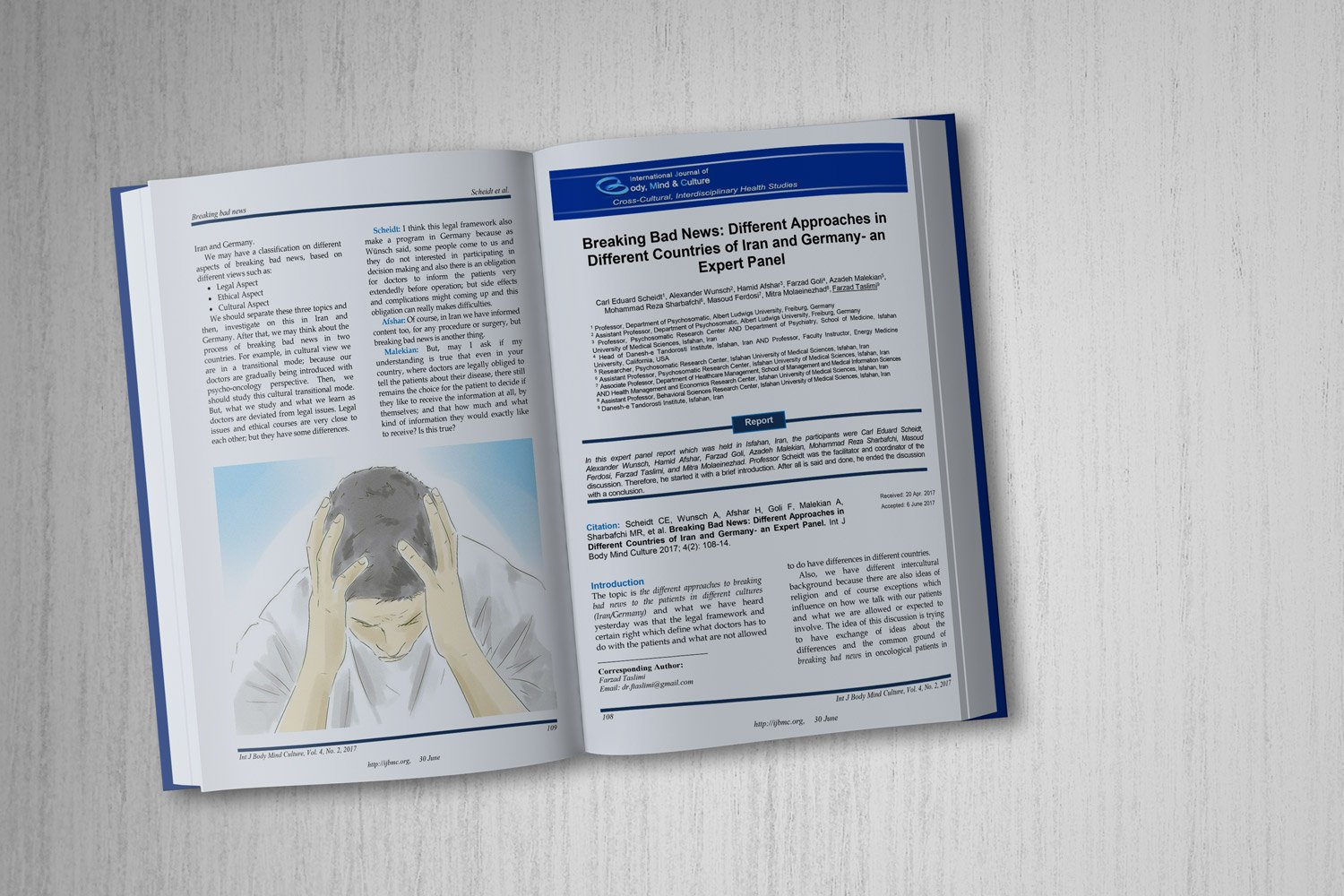The Mediating Role of Psychosomatic Symptoms in the Relationship between Personality Characteristics and Marital Conflicts
Downloads
Background: Personality characteristics can be used to predict a person's behavior in various life situations, including marriage. This study was conducted to investigate the mediating role of psychosomatic symptoms in the relationship between personality characteristics and marital conflicts.
Methods: The present descriptive correlational study was performed on all conflicting couples referring to the counseling centers in Mashhad, Iran, in 2018. The sample included 200 conflicting couples referring to the thought and behavior counseling centers in Mashhad selected using convenience sampling method. Cattell’s Sixteen Personality Factor (16PF) Questionnaire, Takata and Sakata’s Psychosomatic Complaints Scale, and the Marital Conflict Questionnaire were used to collect data. Data were analyzed using Pearson correlation coefficient and path analysis in SPSS and LISREL software.
Results: The results showed that personality characteristics can be used to predict a person's behavior in various life situations including marriage, and that there was a significant relationship between personality characteristics and marital conflicts (P < 0.01).
Conclusion: It can be concluded that psychosomatic symptoms have a mediating role in the relationship between personality characteristics and marital conflicts.
Downloads
Barzegar, M. (1996). Cattell 16 Personality Factor Questionnaire Standardization of High school students in Shiraz [MSc Thesis]. Tehran, Iran: Allame Tabatabaee University.
Bjelland, I., Dahl, A. A., Haug, T. T., & Neckelmann, D. (2002). The validity of the Hospital Anxiety and Depression Scale. An updated literature review. J Psychosom.Res, 52(2), 69-77. doi:S0022399901002963 [pii];10.1016/s0022-3999(01)00296-3 [doi]. Retrieved from PM:11832252
Bozo, O., Ar, Y., & Dilay Eldogan, D. (2019). Does marital adjustment mediate type C personality-depressive symptoms relation? A comparison between breast cancer patients and cancer-free women. Curr Psychol, 38(5), 1310-1317.
Cash, T. F., Jakatdar, T. A., & Williams, E. F. (2004). The Body Image Quality of Life Inventory: Further validation with college men and women. Body.Image., 1(3), 279-287. doi:S1740-1445(03)00023-8 [pii];10.1016/S1740-1445(03)00023-8 [doi]. Retrieved from PM:18089159
Falahati, F., & Mohammadi, M. (2020). Prediction of marital burnout based on automatic negative thoughts and alexithymia among couples. Journal of Midwifery and Reproductive Health, 8(2), 2211-2219.
Glasser, W. (2001). Counseling with choice theory: The new reality therapy (pp. 23-24). New York, NY: HarperCollins.
Greeff, P. (2000). Conflict management style and marital satisfaction. J Sex Marital Ther, 26(4), 321-334.
Hekmatravan, R., Samsum Shariat, M., Khani. F., Khademi M. (2012; Oct, 17-19). The relationship between anxiety and depression with Somatization in Blind people of Isfahan city. Proceedings of the 4th International Congress on Psychosomatic; Isfahan, Iran.
Ismaili, M., Shokohian, N. (2012 Oct). The effect of personality characteristics and coping styles on marital satisfaction. Special issue of contemporary psychology. Proceedings of the 4th Congress of the Contemporary Psychology Association; Tehran, Iran.
Iveniuk, J., Waite, L. J., McClintock, M. K., & Teidt, A. D. (2014). Marital conflict in older couples: Positivity, Personality, and health. J Marriage.Fam., 76(1), 130-144. doi:10.1111/jomf.12085 [doi]. Retrieved from PM:27274569
Jadiri, J., Jan Bozorgi., & Rasoulzadeh Tabatabai, S. K. (2009). "Study of the relationship between marital satisfaction (based on religious criteria) with demographic factors, education, duration of marriage, age of marriage and age difference. Ravanshenasi Va Din, 2(1), 49-84.
Janati Jahromi, M., Moein, L., & Yazdani, L. (2010). A comparison of the relationship between personality traits and marital life satisfaction of married and employed women in Kazeroon. Sociology of Women (Journal of Woman and Society), 1(2), 143-162.
Khodayarifard, M., Sadeghi, K., & Abedini, Y. (2007). Cognitive-Behavioral Family Therapy combined With chiropractic in treatment of psychosomatic disorders. Research in Psychological Health 1(1), 5-15.
Meyers, L. S., Gamst, G. C., & Guarino, A. J. (2013). Performing data analysis using IBM SPSS. Hoboken, NJ: John Wiley & Sons.
Moshtaghi, M., Allameh, F. Surveying the stress and psychosomatic disease among nurses in Isfahan. Proceedings of the 4th International Congress on Psychiatry; 2012 Oct; Isfahan, Iran.
Namdarpour, F., Fatehizade, M., Bahrami,F., &Mohammadi-Fesharaki, R. (2017). Factors affecting rumination among women having marital conflicts. J Res Behav Sci, 15(4), 459-466.
Rasoulzadeh Tabatabaee, K., Beshart, M. A., & Bazyari, M. (2005). Personality traits, social and economic conditions of runaway and nonrunaway girls in Tehran. Daneshvar Raftar, 12(10 Special Edition on Psychology), 23-34.
Razavi, R., Arab, A., & Shirazi, M. (2019). A comparison of life expectancy, feelings of guilt, and psychosomatic disorders between revealing female addicts under compulsory treatment and self-introduced female addicts. J Police Med, 8(2), 69-73.
Sadrai, A., Barati, S., Hadadi, M., & Zalpoor Moghadami, Z. (2012 Oct 17-19). Compared to other psychological disorders among opiate and methamphetamine. Proceedings of the International Congress on Psychosomatic; Isfahan, Iran.
Sarason, I. G., & Sarason, B. R. (1987). Abnormal psychology: The problem of maladaptive behavior, 5th ed. Englewood Cliffs, NJ, US: Prentice-Hall, Inc.
Sayehmiri, K., Kareem, K. I., Abdi, K., Dalvand, S., & Gheshlagh, R. G. (2020). The relationship between personality traits and marital satisfaction: a systematic review and meta-analysis. BMC.Psychol, 8(1), 15. doi:10.1186/s40359-020-0383-z [doi];10.1186/s40359-020-0383-z [pii]. Retrieved from PM:32033583
Shabbeh, Z., Feizi, A., Afshar, H., Hassanzade Kashtali, A., & Adibi, P. (2016). Identifying the Profiles of Psychosomatic Disorders in an Iranian Adult Population and their Relation to Psychological Problems. J Mazand Univ Med Sci, 26(137), 82-94.
Steptoe, A., Wardle, J., Pollard, T. M., Canaan, L., & Davies, G. J. (1996). Stress, social support and health-related behavior: a study of smoking, alcohol consumption and physical exercise. J Psychosom.Res, 41(2), 171-180. doi:0022399996000955 [pii];10.1016/0022-3999(96)00095-5 [doi]. Retrieved from PM:8887830
Young, M. E., & Long, L. L. (1998). Counseling and therapy for couples (pp. 34-345). Belmont, CA, US: Thomson Brooks/Cole Publishing Co.
Copyright (c) 2021 mohsen doustkam, sepideh pourheydari, ahmad Mansouri, Amrollah Ebrahimi, farzad goli, hamid afshar

This work is licensed under a Creative Commons Attribution-NonCommercial 4.0 International License.















